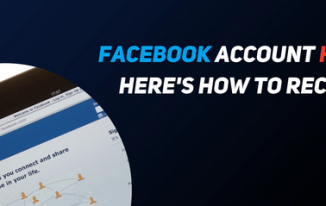In the dynamic landscape of social media marketing, understanding the intricacies of platforms like Instagram is essential for brands and individuals alike. With over a billion monthly active users, Instagram has become a powerhouse for businesses, influencers, and creators to reach and engage with their audience. However, amidst the noise of countless posts, stories, and reels, timing plays a critical role in maximizing visibility and engagement. In this comprehensive guide, we’ll delve into the concept of the best time to post on Instagram, exploring the factors influencing optimal posting times and strategies to leverage them effectively.
Understanding Instagram’s Algorithm:
To comprehend the significance of timing on Instagram, it’s imperative to grasp the workings of its algorithm. Instagram’s algorithm determines the content users see on their feeds based on various factors, including relevancy, engagement, and timeliness. While the platform hasn’t disclosed every detail of its algorithm, key elements such as engagement rate, post interactions, and post frequency significantly impact visibility.
Factors Influencing the Best Time to Post:
Audience Demographics:
The demographics of your target audience play a pivotal role in determining the best time to post. Understanding where your followers are located, their age group, occupation, and typical daily routine helps tailor your posting schedule to align with their online activity.
Time Zone Variations:
Considering the global user base of Instagram, time zone variations are crucial. Posting at an optimal time for your local audience might not yield the same results for followers in different time zones. Thus, adjusting your posting schedule to cater to diverse time zones can enhance overall engagement.
Industry and Niche:
The nature of your content and your industry niche also influences the best time to post. For instance, if you’re in the fashion industry, evenings or weekends might be more favorable as people tend to engage with lifestyle content during leisure hours. Conversely, B2B brands might find weekdays and business hours more effective for reaching their target audience.
Day of the Week:
Different days of the week witness varying levels of user activity on Instagram. Analyzing your audience’s behavior patterns can reveal which days yield higher engagement rates. For instance, weekdays might be ideal for professional content, while weekends may be better suited for leisure and entertainment-related posts.
Analyzing Insights and Data:
Utilizing Instagram’s built-in analytics tool or third-party analytics platforms provides valuable insights into your audience’s behavior. Monitoring metrics such as post reach, impressions, and engagement over time unveils patterns that inform your posting strategy.
Strategies for Determining the Best Time to Post:
Conduct A/B Testing:
Experimenting with different posting times and analyzing their performance is crucial for refining your posting schedule. Conduct A/B tests by posting at various times and days, and closely monitor the engagement metrics to identify patterns and trends.
Utilize Instagram Insights:
Instagram Insights offers a wealth of data regarding your audience’s activity patterns. Analyze metrics like follower activity, post interactions, and audience demographics to identify the optimal times for posting content.
Leverage Third-Party Tools:
Several third-party tools and applications specialize in analyzing Instagram data and suggesting the best times to post. These tools aggregate data from various sources and provide actionable insights to optimize your posting schedule.
Engage with Your Audience:
Directly engaging with your audience through polls, surveys, or Q&A sessions can provide firsthand insights into their preferences and behavior. Soliciting feedback and actively listening to your followers fosters a stronger connection and helps tailor your content strategy accordingly.
Stay Updated and Flexible:
The dynamics of social media platforms, including Instagram, are constantly evolving. Stay abreast of algorithm changes, trends, and shifts in user behavior to adapt your posting strategy accordingly. Remaining flexible and agile allows you to capitalize on emerging opportunities and maintain relevance.
Conclusion:
In the realm of Instagram marketing, timing is undeniably a critical component for maximizing engagement and visibility. By understanding the nuances of your audience, leveraging data analytics, and employing strategic approaches, you can unlock the potential of optimal posting times to enhance your brand’s reach and impact. As Instagram continues to evolve, staying proactive and adaptable ensures your content remains compelling and resonates with your audience across diverse time zones and demographics.
Best time to post on instagram




